-
Laboratory of Astrophysics and Cosmology
-
Laborarory of Theory of Integrable Systems
-
Laboratory of Strongly-correlated Low Dimensional SystemsLaboratory of Biophysics of Macromolecules
-
Laboratory of Mathematical Modelling
-
Laborarory of Structure of Atomic Nuclei
Department of Astrophysics and Elementary Particles
Head of the department – corresponding member of the National Academy of Sciences of Ukraine, Prof., Dr. Valery P. Gusynin.
The department incorporates the Laboratory of Astrophysics and Cosmology.
Head of the laboratory – Dr. Yuri V. Shtanov.
Research fields
- Quantum field theory and its applications to nuclear and particle physics and condensed matter physics
- Astrophysics, cosmology and gravity theories
- Condensed matter physics: graphene, high temperarture superconductivity, superfluidity
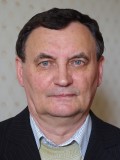
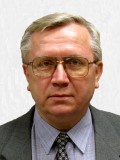
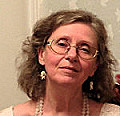
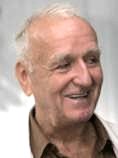
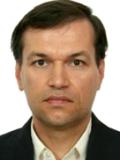

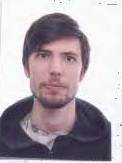
Laboratory of Astrophysics and Cosmology

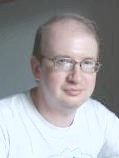
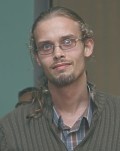


- The properties of the radiation in the Lyman-alpha line of hydrogen in nine nearby galaxies with the lowest known content of chemical elements heavier than helium using Hubble Space Telescope observations were studied. These galaxies are considered as the best local analogues of dwarf galaxies that existed in the early Universe during the epoch of re-ionization when its age was less than 10 per cent of the present-day age. A strong and narrow Lyman-alpha emission line is observed in seven of the nine galaxies studied, which probably indicates a large loss of ionizing radiation that goes beyond these galaxies into the intergalactic medium and causes its ionization. The results of this study are a strong argument in favor of the fact that dwarf galaxies with active star formation were the main source of the re-ionization of the Universe.Y.I. Izotov, N.G. Guseva
- It is shown that a large class of modified theories of gravity with the Lagrangian f(R) corresponds to models of a scalar field with a hilltop or tabletop potential in the Einstein frame. In such models, gravity can asymptotically disappear for infinite or large finite values of the scalar curvature. A universe evolving toward zero curvature is an observable universe. A universe evolving toward asymptotically vanishing gravity will either encounter the "Big-Rip" singularity or remain forever in the regime of inflation.Yu.V. Shtanov
- The formalism of reduced quantum electrodynamics is generalized to the case of heterostructures composed of a few atomically thick layers, and the corresponding effective (2+1)-dimensional gauge theory is formulated. This dimensionally reduced theory describes charged fermions confined to N planes and contains N vector fields with Maxwell's action modified by non-local form-factors whose explicit form is determined. Taking into account the polarization function, the explicit formulae for the screened electromagnetic interaction are presented in the case of two and three layers. For a heterostructure with two atomically thick layers and charged fermions described by the massless Dirac equation, the quasiparticle gap generation of the excitonic type is studied. It is found that additional screening due to the second layer increases the value of the critical coupling constant for the gap generation compared to that in graphene.V.P. Gusynin, E.V. Gorbar
- Yu.I. Izotov and N.G. Guseva as part of an international team of researchers from Ukraine, Switzerland, France, Denmark and the United States of America using data of the first observations of galaxies in the early Universe on the largest 6-meter James Webb space telescope determined the chemical composition of galaxies in the epoch of secondary ionization at high redshifts 6.7 - 8.4, when the age of the universe was less than 1 billion years. It was found that the studied galaxies have a chemical composition similar to the chemical composition of present-day galaxies. This implies the rapid chemical evolution of young galaxies over a short period of several tens of millions of years. As a result, galaxies quickly "forgot" about the physical conditions that existed during their formation.Y.I. Izotov, N.G. Guseva
- We have elucidated the issue of the correspondence between the Jordan and Einstein conformal frames in the Standard Model interacting with modified gravity with action f(R). The scalaron-dependence of the vacuum Higgs-field expectation value and of the constant of strong interaction leads to a universal renormalization of masses of all particles in the Einstein system. We have analyzed possible potentially observable effects in such a theory, in which modified gravity plays the role of dark matter.Yu.V. Shtanov
- We develop an approach to calculate the optical and Hall conductivities for models with arbitrary pseudospin and quasiparticle dispersion. The method is based on the evaluation of quasiparticle velocity correlators which also describe the phenomenon of Zitterbewegung. For the semi-Dirac model the obtained expressions allow us to analyze the role of spectrum anisotropy, Van Hove singularities, and Dirac cones in longitudinal conductivity.. For the dice model we emphasize the role of the spectral gap, which defines frequency thresholds related to transitions to and from a flat band.V.P. Gusynin
- The gap generation in the dice model with local four-fermion interaction is studied. Due to the presence of two valleys with degenerate electron states, there are two main types of gaps. The intra and intervalley gap describes the electron and hole pairing in the same and different valleys, respectively. We found that while the generation of the intravalley gap takes place only in the supercritical regime, the intervalley gap is generated for an arbitrary small coupling. The physical reason for the absence of the critical coupling is the catalysis of the intervalley gap generation by the flat band in the electron spectrum of the dice model. The dispersionless band has a singular density of states that strongly enhances the intervalley gap generation leading to an extremely large gap proportional to the area of the Brillouin zone.Cor.-member of the NAS of Ukraine V.P. Gusynin, E.V. Gorbar
- The observation with the Hubble Space Telescope of nine low-mass star-forming galaxies with stellar masses M★< 108 solar masses has been presented. According to theoretical predictions the escaping fraction of ionizing radiation should increase with decreasing galaxy stellar mass. However, contrary to these expectations, we find no increase of escape fraction of ionizing radiation capable of ionizing the intergalactic medium with decreasing galaxy stellar mass.Acad. of the NAS of Ukraine Y.I. Izotov, N.G. Guseva
- A new cosmological scenario is proposed in which the scalaron of f (R) gravity after the electroweak crossover plays the role of dark matter. Its current energy density in this scenario matches the observed value for the scalaron mass m ≈ 4 meV. In this case, dark-matter perturbations of adiabatic type are automatically generated in an inhomogeneous universe.Yu.V. Shtanov
- By using the effective low-energy Hamiltonian for pseudospin-1 fermions, the RKKY interaction for magnetic impurities placed on the same or different sublattices of dice lattice was calculated. It was shown that there are three types of interaction, which depend on the model parameter defining the relative strength of hoppings between sublattices, two of them can be reduced to graphene case while the third one is new and is due to the presence of a flat zero-energy band. The general analytical expressions for the RKKY interaction were derived in terms of Mellin-Barnes type integrals. It is shown that the interaction between impurities located at different rim sites displays a very strong temperature dependence at small doping being a direct consequence of the presence of the flat band.Cor. Member of the NAS of Ukraine V.P. Gusynin
- It is shown for a one-dimensional system of point bosons that, at a weak coupling, the Lieb's "hole" excitation is a certain set of interacting phonons. This means that the holes are not a physically independent type of quasiparticles, although in literature it was considered the opposite for a long time.M.D. Tomchenko
- We present observations with the Cosmic Origins Spectrograph onboard the Hubble Space Telescope of eight nearby compact star-forming galaxies with low oxygen abundances aiming to study the properties of Lyman α emission in such conditions. In five galaxies Lyman α emission line is strong. In the remaining three galaxies, weak Lyman α emission is superposed on a broad Lyman α absorption line. We find an anticorrelation between Lyman α escape fraction and the distance between peaks of the Lyman α profile, though not as tight as the one found earlier between escape fraction of Lyman continuum and the distance between peaks of the Lyman α profile. This finding makes the distance between peaks of the Lyman α profile a promising indirect indicator of both the Lyman α and ionizing radiation leakage.Acad. of the NAS of Ukraine Y.I. Izotov, N.G. Guseva
- We construct a perturbative chiral theory for quantum gravity in first-order formalism based on two-component spinors. In contrast to other approaches of this type, we succeeded in fixing gauge freedom so that the propagator of the spin connection vanishes. This significantly simplifies calculation of Feynman diagrams. The new formalism is the gravity analog of the well-known and powerful chiral description of Yang-Mills theory of gauge vector fields.Yu.V. Shtanov
- The electron states of gapped pseudospin-1 fermions on a honeycomb lattice with additional atoms in the center of each hexagon (dice lattice) were studied in the presence of a charged impurity. The bound electron states are found in the case of the radially symmetric potential well and a regularized Coulomb potential. It is shown that as the charge of the impurity increases, bound-state energy levels descend from the upper and central continua and dive at certain critical charges into the central and lower continua, respectively, realizing the so-called phenomenon of atomic collapse for pseudospin-1 fermions. In the dice model, it is found that the flat band survives in the presence of a potential well, however, it is absent in the case of the Coulomb potential. The analytical results were obtained for the energy levels near continuum boundaries in the potential well. For the genuine Coulomb potential it is shown that analytical solutions exist for a countably infinite set of values of impurity charge at fixed couplings of atoms.Corr. Member of the NAS of Ukraine V.P. Gusynin, E.V. Gorbar
- A method to describe the electric field in a spontaneously polarized isotropic nonpolar dielectric is developed. Helmholtz formula for the electric force acting on a volume element of a dielectric is generalized with regard for the contribution of the spontaneous polarization.M.D. Tomchenko
- Observations with the Hubble Space Telescope of eight compact star-forming galaxies, aiming to study the properties of Lyman-alpha emission in such conditions, have been presented. The relation between the Lyman-alpha escape fraction and the Lyman-continuum escape fraction has been examined. It was found that shape the Lyman-alpha is a good measure of the escaping Lyman-continuum radiation and can be applied for a large number of the galaxies aiming to solve the problem of the reionization of the Universe.Acad. of the NAS of Ukraine Y.I. Izotov, N.G. Guseva
- A simple scenario of inflationary magnetogenesis is proposed based on a helical coupling to electromagnetism. The helical coupling evolves linearly with conformal time interpolating between two constant values. This allows one to avoid the problem of strong gauge coupling and to generate helical magnetic fields of strength of order up to 10-7 G, when extrapolated to the current epoch, in a narrow spectral band centered at any physical wavenumber by adjusting the model parameters. Additional constraints on magnetic fields arise from the considerations of baryogenesis and, possibly, from the Schwinger effect of creation of charged particle-antiparticle pairs.Y.V. Shtanov
- The possible dark matter signal has been searched in the X-ray astrophysical observation data. The surface brightness distribution of the 3.5 keV dark matter candidate line was obtained within the Galactic halo. This distribution was used to update the previous estimates of the sensitivity of the forthcoming dedicated mission Micro-X. The prediction for the width of the dark matter decay line in the future XRISM observations of the Perseus cluster was obtained with the use of cosmological hydrodynamical simulations.D.A. Iakubovskyi
- From the combined analysis of the kinematic data of the dwarf spheroidal galaxies, a new lower bound of ~200 eV on the dark matter fermion mass was obtained. It was shown that it is impossible to constrain robustly the mass of dark matter particle from the cosmological absorption signal on frequencies 75-80 MHz ("21-cm absorption feature"). The detection of this signal was suggested by EDGES collaboration.A.V. Rudakovskyi, D.O. Savchenko, D.A. Iakubovskyi
- Observations with the Hubble Space Telescope have detected the radiation capable to ionize hydrogen, the most abundant element in the Universe, in five unique dwarf galaxies with active star formation and extremely high ionization degree of their interstellar medium. These galaxies were selected from the largest survey of Sloan sky. It is obtained for the first time that the fraction of this radiation ranges between 2% and 72% of the radiation produced in these galaxies. This fraction is sufficient to explain the secondary ionization of the early Universe at the stage when its age was between 200 and 800 million years. The indirect method is proposed which links the fraction of ionizing radiation escaping the galaxy with the profile of the bright Lyman-alpha emission line, the latter being more easily observed in distant galaxies. For this, the data were used for all 11 galaxies in the Local Universe observed with the Hubble Space Telescope. This method can be applied for galaxies at any distances including those at large distances, for which observations of ionizing radiation are difficult or impossible.Acad. of the NAS of Ukraine Y.I. Izotov, N.G. Guseva
- The term quadratic in curvature in the gravitational action in the Starobinsky model can be regarded as the leading quantum correction. We also assume the presence of parity-invariant and axial quantum corrections to the effective action that couple the space-time curvature to the electromagnetic strength tensor. We show that, in the Einstein frame of fields, there arises a nontrivial interaction between the scalar inflaton and electromagnetic field which previously was introduced in the theory artificially. Analysis of the inflationary magnetogenesis in this model shows that amplification of vacuum electromagnetic fields is possible no more than by five orders of magnitude, which is insufficient to explain the large-scale magnetic field in the Universe.Y. Shtanov, O. Savchenko
- We propose a characterization tool for the studies of the band structure of new materials promising for the observation of topological phase transitions. We show that a specific resonant feature in the entropy per electron dependence on the chemical potential may be considered as a fingerprint of the transition between topological and trivial insulator phases. The entropy per electron in a honeycomb two-dimensional crystal of germanene subjected to the external electric field is obtained from the first-principles calculation of the density of electronic states and the Maxwell relation. In a wide energy range, the van Hove singularities in the electronic density of states manifest themselves as zeros in the entropy per particle dependence on the chemical potential.Corr. Member of the NAS of Ukraine V.P. Gusynin, S.G. Sharapov
- We argue that the correct definition of the electric current in the chiral kinetic theory for Weyl materials should include the Chern-Simons contribution that makes the theory consistent with the local conservation of the electric charge in electromagnetic and strain-induced pseudoelectromagnetic fields. By making use of such a kinetic theory, we study the plasma frequencies of collective modes inWeyl materials in constant magnetic and pseudomagnetic fields, taking into account the effects of dynamical electromagnetism. We show that the collective modes are chiral plasmons. While the plasma frequency of the longitudinal collective mode coincides with the Langmuir one, this mode is unusual because it is characterized not only by oscillations of the electric current density, but also by oscillations of the chiral current density. The latter are triggered by a dynamical version of the chiral electric separation effect. We also find that the plasma frequencies of the transverse modes split up in a magnetic field. This finding suggests an efficient means of extracting the chiral shift parameter from the measurement of the plasma frequencies in Weyl materials.E.V. Gorbar
- It is shown that the non-exponential form of the diffraction cone observed in the elastic scattering of protons by the LHC accelerator is a confirmation of the presence of a pion "coat" in protons associated with the analytic properties of the scattering amplitude.L. Jenkovszky
- Using the dark matter density profiles from literature we have selected the 19 galaxy clusters with the largest expected dark matter decay flux. We processed all XMM-Newton public observation data for this objects. The emission spectra were modeled as sum of continuous plasma emission and known astrophysical lines. The fluxes of faint lines (e.g. K at 3.51 keV) were limited from above using fluxes of significantly detected lines. In 6 of spectra we identified >2σ positive residuals with average position 3.56±0.02 keV in the emitters frame. Their observed properties are unlikely to be explained by statistical fluctuations or astrophysical emission lines. Our detailed simulations showed that the combined significance of these detections equals to at least 2.6σ, raising to 3.2σ taking the line energy variation into account. Fitting the line position in observers frame prefers the astrophysical origin of line signal over instrumental one, with atomic line emission being included in the fitting models. Interpreting the new line due to decaying dark matter gives the radiative decay lifetime τDM≈(3.2−5.3)×1027 s consistent with previous detections.D.A. Iakubovskyi, D.O. Savchenko
- The electron states in the field of a charged impurity in graphene in a magnetic field are studied. It is shown that a charged impurity removes the degeneracy of Landau levels converting them into bandlike structures. As the charge of impurity grows, the repulsion of sublevels of different Landau levels with the same value of orbital momentum takes place leading to the redistribution of the wave function profiles of these sublevels near the impurity. By studying the polarization effects, it is shown that the filling of Landau levels and screened charge of impurity can be very effectively tuned by gate voltage in agreement with the recent experiments. If the chemical potential is situated inside a Landau level, then the charge of impurity is strongly diminished. If the chemical potential lies between the Landau levels, then the screened potential does not change sign, the screening is minimal, and the charged impurity can strongly affect the electron spectrum.E.V. Gorbar, V.P. Gusynin
- Sterile neutrino with mass of about 7 keV can explain the properties of the emission line at energy ~3.5 keV in the spectra of several dark-matter dominated cosmic objects. We investigate the influence of dark matter composed of such sterile neutrino on the process of reionization of the Universe and show that it causes a significantly sharper reionization, impossible to `imitate' within the cold-dark-matter scenario under any reasonable choice of model parameters. The future dedicated studies of reionization by 21-cm tomography of the Universe and investigations of the kinetic Sunyaev-Zeldovich effect will become essential for the reconstruction of particle candidate responsible for the 3.5 keV emission line.A. Rudakovskyi, D. Iakubovskyi
- The process of generation and subsequent free evolution of the lepton chiral asymmetry and helical magnetic field in the early hot universe is studied analytically. For cosmologically relevant initial conditions, the chiral asymmetry and the energy density of helical magnetic field are shown to evolve by scaling laws. We derived an expression for the temperature at which this regime abruptly terminates as a function of the chiral asymmetry and energy density of magnetic field.M.Ye. Sydorenko, Y.V. Shtanov
Articles in journals, other publications
- В.П. Гусинін, Е.В. Горбар, Вступ до квантової теорії калібрувальних полів, Київ: Академперіодика, 2023, 488 сторінок.
- E.V. Gorbar, V.P. Gusynin, M.R. Parymuda, “Reduced QED with few planes and fermion gap generation”, Entropy 25, 1317 (2023).
- Y.O. Nikolaieva, Y.M. Bidasyuk, K. Korshynska, E.V. Gorbar, Junji Jia, A.I. Yakimenko, “Stable vortex structures in colliding self-gravitating Bose-Einstein condensates”, Phys. Rev. D 108, 023503 (2023).
- P.O. Sukhachov, D.O. Oriekhov, E.V. Gorbar, “Stackings and effective models of bilayer dice lattices”, Phys. Rev. B 108, 075166 (2023).
- P.O. Sukhachov, D.O. Oriekhov, E.V. Gorbar, “Optical conductivity of bilayer dice lattices”, Phys. Rev. B 108, 075167 (2023).
- N.G. Guseva, T.X. Thuan, Y.I. Izotov, “Monitoring broad emission-line components in spectra of the two low-metallicity dwarf compact star-forming galaxies SBS 1420+540 and J1444+4840”, Monthly Notices of the Royal Astronomical Society, 527, 3932–3944 (2023).
- Y. Shtanov, V. Sahni, S.S. Mishra, “Tabletop potentials for inflation from f(R) gravity”, Journal of Cosmology and Astroparticle Physics, Volume 03, article id. 023 (2023).
- Yu. Shtanov, “Quantum geometry of spacetime and quantum equilibrium”, Symmetry, Volume 15, article id. 227 (2023).
- I. Szanyi, T. Biró, L. Jenkovszky, V. Libov, “Nonlinear Regge trajectories and saturation of the Hagedorn spectrum”, Phys. Rev. C 107, 024904 (2023).
- L. Jenkovszky, M.J. Lake, V. Soloviev, “János Bolyai, Carl Friedrich Gauss, Nikolai Lobachevsky and the New Geometry: Foreword,” Symmetry 15, 707 (2023).
- R. Schicker, L. Jenkovszky, “Multiple Pion Pair Production in a Regge-based Model,” Acta Phys. Polon. Supp. 16, no.5, 9 (2023).
- L. Jenkovszky, Ė.S. Rocha, M.V.T. Machado, “Light vector meson photoproduction in ultraperipheral heavy-ion collisions at the LHC within the Reggeometric Pomeron approach,” Astron. Nachr. 344, no.1–2, e220117 (2023).
- A. Albert, ... D. Savchenko, ... et al. (Antares coll.), “Hint for a TeV neutrino emission from the Galactic Ridge with ANTARES”, Physics Letters B 841, 137951 (2023).
- M. Chernyakova, D. Malyshev, A. Neronov, D. Savchenko, “Energy-dependent periodicities of LS I+ 61° 303 in the GeV band”, Monthly Notices of the Royal Astronomical Society 525 (2), 2202–2207 (2023).
- L. Zadorozhna, A. Tugay, O. Prikhodko, D. Malyshev, Y. Sahai, D. Savchenko, N. Pulatova, “The study of x-ray spectrum of the Coma cluster, Odessa Astronomical Publications”, vol. 36 (2023).
- E.V. Gorbar, T.V. Gorkavenko, V.M. Gorkavenko, O.M. Teslyk, “Magnetogenesis in non-local models during inflation”, Ukr. J. Phys. 68, 647 (2023).
- K. Korshynska, Y.M. Bidasyuk, E.V. Gorbar, Junji Jia, A.I. Yakimenko, “Dynamical galactic effects induced by stable vortex structure in bosonic dark matter”, Eur. Phys. J. C 83, 451 (2023).
- A.A. Herasymchuk, S.G. Sharapov, V.P. Gusynin, “Zigzag edge states in graphene in the presence of in-plane electric field”, Physica Status Solidi – Rapid Research Letters, 2300084 (11 pages) (2023).
- А.V. Zolotaryuk, Y. Zolotaryuk, V.P. Gusynin, “Bound states and point interactions of the one-dimensional pseudospin-one Hamiltonian”, Journal of Physics A: Mathematical and Theoretical 56, 485303 (33 pages) (2023).
- M. Khelashvili, A. Rudakovskyi, S. Hossenfelder , “Dark matter profiles of SPARC galaxies: a challenge to fuzzy dark matter”, Monthly Notices of the Royal Astronomical Society 523, 3393 (2023).
- Y.I. Izotov et al., “Abundances of CNO elements in z~0.3-0.4 Lyman continuum leaking galaxies”, Monthly Notices of the Royal Astronomical Society 522, 1228–1246 (2023).
- Y.I. Izotov, T.X. Thuan, N.G. Guseva, D. Schaerer, G. Worseck, A. Verhamme, “Lyα emission in low-redshift most metal-deficient compact star-forming galaxies”, Monthly Notices of the Royal Astronomical Society 527, 281–297 (2024).
- Y.I. Izotov, D. Schaerer, N.G. Guseva, T.X. Thuan, G. Worseck, “Extremely strong C IV λ1550 nebular emission in the extremely low-metallicity star-forming galaxy J2229+2725”, Monthly Notices of the Royal Astronomical Society 528, L10–L15 (2024).
- Y.I. Izotov, T.X. Thuan, N.G. Guseva, “J1046+4047: An extremely low-metallicity dwarf star-forming galaxy with O32 = 57”, Monthly Notices of the Royal Astronomical Society 527, 3486–3493 (2024).
Preprints
- Y. Shtanov, “Electroweak symmetry breaking by gravity”, Eprint arXiv:2305.17582 [hep-ph] (2023), направлено до Annals of Physics.
- M. Tomchenko, “Nonuniform Bose-Einstein condensate. I. An improvement of the Gross-Pitaevskii method”, Eprint arXiv:2310.18528 [cond-mat.quant-gas].
- Y. Shtanov, V. I. Zhdanov, “On the discreteness effects in N-body simulations of warm dark matter”, Eprint arXiv:2307.07778 [astro-ph.CO], направлено до Physical Review D.
- M. Tomchenko, “Dispersion law for a one-dimensional weakly interacting Bose gas under zero boundary conditions”, Eprint arXiv:1211.1723v4 [cond-mat.quant-gas].
Papers at conferences and seminars
- V.I. Zhdanov, Yu.V. Shtanov, O.S. Stashko, “Naked singularities in spherically symmetric configurations in the quadratic f(R) gravity,” Book of Abstracts of the International Conference “Astronomy and Space Physics in the Kyiv University”, May 23–26, 2023, Kyiv, Ukraine, p. 44.
Articles in journals, other publications
- I.O. Nimyi, V. Könye, S.G. Sharapov, V.P. Gusynin, "Landau level collapse in graphene in the presence of in-plane radial electric and perpendicular magnetic fields", Phys. Rev. B 106, 085401 (13pp.) (2022).
- D.O. Oriekhov, V.P. Gusynin, "Optical conductivity of semi-Dirac and pseudospin-1 models: Zitterbewegung approach", Phys. Rev. B 106, 115143 (18pp.) (2022).
- V.P. Gusynin, O.O. Sobol, A.V. Zolotaryuk, Y. Zolotaryuk, " Bound states of a one-dimensional Dirac equation with multiple delta-potentials", Low Temperature Physics/Fizyka Nyzkykh Temperatur, Vol. 48, No. 12, pp. 1157–1168 (2022).
- E.V. Gorbar, I.A. Shovkovy, "Chiral anomalous processes in magnetospheres of pulsars and black holes", Eur. Phys. J. C 82, 625 (2022).
- E.V. Gorbar, K. Schmitz, O.O. Sobol, S.I. Vilchinskii, "Hypermagnetogenesis from axion inflation: Model-independent estimates", Phys. Rev. B 105, 043530 (2022).
- E.V. Gorbar, I.L. Shapiro, "Nonlocality of quantum matter corrections and cosmological constant coupling", Journal High Energy Physics 07, 103 (2022).
- E.V. Gorbar, Y.O. Nikolaieva, I.V. Oleinikova, S.I. Vilchinskii, A.I. Yakimenko, "s- and p-superfluidity of Fermi atoms in Bose–Fermi mixtures", Low Temperature Physics 48, 660 (2022).
- A.A. Herasymchuk, P.O. Sukhachov, E.V. Gorbar, "Electric and chiral response to a pseudoelectric field in Weyl materials", Phys. Rev. B 106, 045132 (2022).
- L. Jenkovszky, V. Libov, M.V.T. Machado, "Regge phenomenology and coherent photoproduction of charmonium in peripheral heavy ion collisions", Physics Letters B 827, 137004 (2022).
- L. Jenkovszky, R. Schicker, I. Szanyi, "Diffractive dissociation based on factorization and structure functions", Entropy 24, 1001 (2022).
- L. Jenkovszky, E.S, Rocha, M.V. T. Machado, "Investigating exclusive ρ0 photoproduction within the Regge phenomenology approach" , Physics Lett. B 835, 137585 (2022).
- N.G. Guseva, T.X. Thuan, Y.I. Izotov, "Decade-long time-monitoring of candidate luminous blue variable stars in the two very metal-deficient star-forming galaxies DDO 68 and PHL 293B", Monthly Notices of the Royal Astronomical Society 516, L81–L85 (2022).
- T.X. Thuan, N.G. Guseva, Y. I. Izotov, "Optical spectroscopy of the extremely metal-deficient star-forming galaxy HSC J1631+4426: a test of the strong-line method", Monthly Notices of the Royal Astronomical Society 512, 4298–4307 (2022).
- Y.I. Izotov, J. Chisholm, G. Worseck, N.G. Guseva, D. Schaerer, J.X. Prochaska, "Lyman alpha and Lyman continuum emission of Mg II-selected star-forming galaxies", Monthly Notices of the Royal Astronomical Society 515, 2864–2881 (2022).
- D. Schaerer, R. Marques-Chaves, L. Barrufet, P. Oesch, Y.I. Izotov, R. Naidu, N.G. Guseva, G. Brammer, “First look with JWST spectroscopy: Resemblance among z ~ 8 galaxies and local analogs”, Astronomy and Astrophysics 665, L4 (2022).
- R. Marques-Chaves, …, Y.I. Izotov, et al., "No correlation of the Lyman continuum escape fraction with spectral hardness", Astronomy and Astrophysics 663, L1 (2022).
- Schaerer, Y.I. Izotov, G. Worseck, D. Berg, J. Chisholm, A. Jaskot, K. Nakajima, S. Ravindranath, T.X. Thuan, A. Verhamme, "Strong Lyman continuum emitting galaxies show C IV 1550 emission", Astronomy and Astrophysics 658, L11 (2022).
- C. Henkel, L.K. Hunt, Y.I. Izotov, "The interstellar medium of dwarf galaxies", Galaxies 10, 11, 29 pp. (2022).
- Y. Shtanov, "On the conformal frames in f(R) gravity", Universe 8, Issue 2, article id. 69 (2022).
- Y. Shtanov, "Initial conditions for the scalaron dark matter", Journal of Cosmology and Astroparticle Physics 10, article id. 079 (2022).
- Yu. Shtanov, "Cosmic neutrino from the decay of the scalaron dark matter", Вісник КНУ. Астрономія 66, No. 2, (2022).
- M.D. Tomchenko, "Symmetry properties of the ground state of the system of interacting spinless bosons", Low Temp. Phys. 48, No. 9, pp. 651–659 (2022).
- M. Tomchenko, "Exact crystalline solution for a one-dimensional few-boson system with point interaction", J. Phys. A: Math. Theor. 55, No. 13, 135203 (2022).
- A.I. Bugrij, V.M. Loktev, "On the features of ideal Bose-gas thermodynamic properties at a finite particle number", Ukr. J. Phys. V. 67(4), 235–239 (2022).
Papers at conferences and seminars
- Yu. Shtanov, "Inflation or dark matter from f(R) gravity," Book of Abstracts of the International Conference "Astronomy and Space Physics", October 18–21, 2022, Kyiv, Ukraine, p. 33.
Articles in journals, other publications
- E.V. Gorbar, V.A. Miransky, I.A. Shovkovy, P.O. Sukhachov, Electronic properties of Dirac and Weyl semimetals, Singapore, World Scientific, 2021.
- D.O. Oriekhov, V.P. Gusynin, and V.M. Loktev, "Orbital susceptibility of T-graphene: Interplay of high-order van Hove singularities and Dirac cones", Phys. Rev. B 103, 195104 (2021).
- Yu. Yerin, V.P. Gusynin, S.G. Sharapov, and A.A. Varlamov, "Genesis and fading away of persistent currents in a Corbino disk geometry", Phys. Rev. B 104, 075415 (2021).
- E.V. Gorbar, V.P. Gusynin, D.O. Oriekhov, "Gap generation and flat band catalysis in dice model with local interaction'", Phys. Rev. B 103, 155155 (2021).
- Y. Shtanov, "Constraints in inflationary magnetogenesis", Arab. J. Math. (2021) (special issue).
- Y. Shtanov, "Light scalaron as dark matter," Physics Letters B 820, 136469 (2021).
- S. Bag, V. Sahni, A. Shafieloo and Y. Shtanov, "Phantom braneworld and the Hubble tension", Astrophys. J. 923, 212 (2021).
- O.O. Sobol, E.V. Gorbar, O.M. Teslyk, S.I. Vilchinskii, "Generation of an electromagnetic field nonminimally coupled to gravity during Higgs inflation", Phys. Rev. B 104, 043509 (2021).
- P.O. Sukhachov, E.V. Gorbar, I.A. Shovkovy, "Strong suppression of electron convection in Dirac and Weyl semimetals", Phys. Rev. B 104, 121113 (2021).
- P.O. Sukhachov, E.V. Gorbar, I.A. Shovkovy, "Entropy wave instability in Dirac and Weyl semimetals", Phys. Rev. Lett. 127, 176602 (2021).
- P.O. Sukhachov, E.V. Gorbar, "Stray magnetic field and stability of time-dependent viscous electron flow", Phys. Rev. B 104, 195111 (2021).
- E.V. Gorbar, K. Schmitz, O.O. Sobol, S.I. Vilchinskii, "Gauge-field production during axion inflation in the gradient expansion formalism", Phys. Rev. D 104, 123504 (2021).
- Izotov Y. I., Worseck G., Schaerer D., Guseva N. G., Chisholm J., Thuan T. X., Fricke K. J., Verhamme A. "Lyman continuum leakage from low-mass galaxies with M★ < 108 M⊙", Monthly Notices of the Royal Astronomical Society, 503, 1734–1752 (2021).
- Izotov Y.I., Thuan T.X., Guseva N.G., "J2229+2725: an extremely low metallicity dwarf compact star-forming galaxy with an exceptionally high [OIII]λ5007/[OII]λ3727 flux ratio of 53", Monthly Notices of the Royal Astronomical Society, 504, 3996–4004 (2021).
- Izotov, Y.I., Thuan, T.X., Guseva N.G., "Large binocular telescope observations of new six compact star-forming galaxies with [Ne v] λ3426Å emission", Monthly Notices of the Royal Astronomical Society, 508, 2556–2574 (2021).
- Izotov Y. I., Guseva N. G., Fricke K. J., Henkel C., Schaerer D., Thuan T. X. "Low-redshift compact star-forming galaxies as analogues of high-redshift star-forming galaxies", Astronomy and Astrophysics, 646, 138 (2021).
- R. Fiore, L. Jenkovszky, M. Oleksiinko, "On matter and pressure distribution in nucleons", PEPAN, Letters, v.18, issue 5(237), p. 428 (2021).
- L. Jenkovszky, "Worldlines and social networks", Journal of the Belarusian State University. Sociology, 1, 23–37 (2021).
- V.E. Kuzmichev, V.V. Kuzmichev. "Classical behavior of a quantum particle in a refringent medium", American Journal of Physics, Vol. 89 (8), p. 793–798 (2021).
- A.I. Bugrij, V.M. Loktev, "On the theory of ideal Bose-gas", LTP 47, №2, р. 132–135 (2021).
- A. Boyarsky, D. Malyshev, O. Ruchayskiy, D. Savchenko, «Technical comment on the paper of Dessert et al. «The dark matter interpretation of the 3.5 keV line is inconsistent with blank-sky observations»» SciPost Astro. Core 1, 001 (2021).
- A. Rudakovskyi, A. Mesinger, D. Savchenko, N. Gillet, "Constraints on warm dark matter from UV luminosity functions of high-z galaxies with Bayesian model comparison", Monthly Notices of the Royal Astronomical Society, 507, Issue 2, pp. 3046–3056 (2021).
Preprints
- L. Jenkovszky, M. Machado,V. Libov, “The reggeometric pomeron and exclusive production of J/ψ and ψ(2S) in ultraperipheral collisions at the LHC”, Phys. Letters B, 2021, in print; arXiv:2111.13389.
- A.I. Bugrij, V.M. Loktev, “On the theory of ideal Bose-gas at finite particle number”, направлена до друку в СМР.
- M. Tomchenko, “Exact crystalline solution for a one-dimensional few-boson system with point interaction”, arXiv:2108.06494 [cond-mat.other], submitted to J. Phys. A.
Papers at conferences and seminars
- Y. Shtanov, “Constraints in inflationary magnetogenesis”, International Workshop on Relativistic Astrophysics and Gravitation (IWRAG-2021), Tashkent, Uzbekistan, May 12–14, 2021, Book of Abstracts, P. 12.
- Yu. Shtanov, “Light scalaron as dark matter,” Book of Abstracts of the International Conference “Astronomy and Space Physics in the Kyiv University”, May 25–28, 2021, Kyiv, Ukraine, p. 40.
Articles in journals, other publications
- E.V. Gorbar, V.A. Miransky, I.A. Shovkovy, P.O. Sukhachov. Electronic properties of Dirac and Weyl semimetals, World Scientific (2020), 504 pp.
- I.V. Sukhenko, S.G. Sharapov, and V.P. Gusynin. "Differential entropy per particle in Dirac semimetals in external magnetic field", Low Temperature Physics/Fizika Nizkikh Temperatur, V.46, 322 (2020).
- D. Grassano, M. D'Alessandro, O. Pulci, S.G. Sharapov, V.P. Gusynin, and A.A. Varlamov. "Work function and deformation potential of strained graphene and silicene", Phys. Rev. B 101, 245115 (8p) (2020).
- D.O. Oriekhov and V.P. Gusynin. "RKKY interaction in doped pseudospin-1 fermion system at finite temperature", Phys. Rev. B 102, 235162 (14p) (2020).
- V.P. Gusynin, A.V. Kotikov, and S. Teber. "Landau-Khalatnikov-Fradkin transformation in three-dimensional quenched QED", Phys. Rev. D 102, 025013 (18p) (2020).
- A.F. Pikelner, V.P. Gusynin, A.V. Kotikov, and S. Teber. "Four-loop singularities of the massless fermion propagator in quenched three-dimensional QED", Phys. Rev. D 102, 105012 (9p) (2020).
- O.O. Sobol, E.V. Gorbar, A.I. Momot, and S.I. Vilchinskii. "Schwinger production of scalar particles during and after inflation from the first principles", Phys. Rev. D 102, 023506 (2020).
- P.O. Sukhachov, M.V. Rakov, O.M. Teslyk, and E.V. Gorbar. "Fermi arcs and DC transport in nanowires of Dirac and Weyl semimetals", Annalen der Physik (Berlin) 2020, 1900449 (2020).
- P.O. Sukhachov and E.V. Gorbar. "Superconductivity in Weyl semimetals in a strong pseudomagnetic field", Phys. Rev. B 102, 014513 (2020).
- O.V. Bugaiko, E.V. Gorbar, and P.O. Sukhachov. "Surface plasmon polaritons in strained Weyl semimetals", Phys. Rev. B 102, 085426 (2020).
- O.O. Sobol, A.V. Lysenko, E.V. Gorbar, and S.I. Vilchinskii. "Gradient expansion formalism for magnetogenesis in the kinetic coupling model", Phys. Rev. D 102, 123512 (2020).
- László Jenkovszky. "Spin and Polarization in High-Energy Hadron-Hadron and Lepton-Hadron Scattering", Symmetry, 12(11), 2020, p.1784.
- Laszlo Jenkovszky. "Quarks, gluons and glueballs", Physics of Particles and Nuclei (ЭЧАЯ), v. 51, No. 4 (2020) 686-689.
- Y.I. Izotov, D. Schaerer, G. Worseck, A. Verhamme, N.G. Guseva, T.X. Thuan, I. Orlitova and K.J. Fricke. "Diverse properties of Lyα emission in low-redshift compact star-forming galaxies with extremely high [O III]/[O II] ratios", 2020, MNRAS (Monthly Notices of the Royal Astronomical Society), Volume 491, Issue 1, p. 468–482
- S. Gazagnes, J. Chisholm, D. Schaerer, A. Verhamme, Y. Izotov. "The origin of the escape of Lyman α and ionizing photons in Lyman continuum emitters", 2020, Astronomy and Astrophysics, Volume 639, 85, 28pp.
- N.G. Guseva, Y.I. Izotov, D. Schaerer, J.M. Vílchez, R. Amorín, E. Pérez-Montero, J. Iglesias-Páramo, A. Verhamme, C. Kehrig, L. Ramambason. "Properties of five z ∼ 0.3–0.4 confirmed LyC leakers: VLT/XShooter observations" , 2020, MNRAS (Monthly Notices of the Royal Astronomical Society), Volume 497, p. 4293-4310.
- L. Ramambason, D. Schaerer, G. Stasińska, Y.I. Izotov, N.G. Guseva, J.M. Vílchez, R. Amorín, C. Morisset. "Reconciling escape fractions and observed line emission in Lyman-continuum-leaking galaxies", 2020, Astronomy and Astrophysics, 644, 21, 16pp.
- K. Krasnov, Yu. Shtanov. "Chiral perturbation theory for GR", Journal of High Energy Physics 09, No. 017 (2020).
- Yu. Shtanov, M. Pavliuk. "Model-independent constraints in inflationary magnetogenesis", Journal of Cosmology and Astroparticle Physics 08, No. 042 (2020).
- A. Rudakovskyi, D. Savchenko, M. Tsizh. "Can EDGES observation favour any dark matter model?", MNRAS 497 (3), 3393-3399 (2020).
- V.E. Kuzmichev, V.V. Kuzmichev. "Uncertainty principle in quantum mechanics with Newton's gravity", Eur. Phys. J. C, Vol. 80, No. 3, p. 248 (7 p.), 2020.
- M. Tomchenko. "Nature of Lieb's "hole" excitations and two-phonon states of a Bose gas", J. Low Temp. Phys. 201, No. 3-4, pp. 463-488 (2020).
- М.Д. Томченко. "Акустические моды в He I и He II в присутствии переменного электрического поля", ФНТ 46, № 5, с. 584-597 (2020).
- M. Tomchenko. "On a fragmented condensate in a uniform Bose system", J. Low Temp. Phys. 198, No. 1-2, pp. 100-121 (2020).
Preprints
- D.O. Oriekhov, V.P. Gusynin, and V.M. Loktev. "Orbital susceptibility of T-graphene: Interplay of high-order van Hove singularities and Dirac cones", arxiv:2009.05612.
- V.E. Kuzmichev, V.V. Kuzmichev. "On the conditions for the classicality of a quantum particle", arXiv:2007.11886 [quant-ph], 12p.
- A. Boyarsky, D. Malyshev, O. Ruchayskiy, D. Savchenko. "Technical comment on the paper of Dessert et al. "The dark matter interpretation of the 3.5 keV line is inconsistent with blank-sky observations", preprint https://scipost.org/submissions/2004.06601v1/
Papers at conferences and seminars
- V.P. Gusynin. "Entropy signatures of topological phase transitions", In the book of abstracts of Ukrainian-Polish Workshop "Photon-Graphene Interaction:Phenomena and Application", Kiev, February 13-14, 2020, p.30.
- Yu.V. Shtanov, M.V. Pavliuk. "Model-independent constraints in inflationary magnetogenesis," Book of Abstracts of the International Conference "Astronomy and Space Physics in the Kyiv University", May 27–29, 2020, Kyiv, Ukraine, p. 29.
Articles in journals, other publications
- E.V. Gorbar, V.P. Gusynin, D.O. Oriekhov. Electronic properties of gapped pseudospin-1 fermions in the field of charged impurity, Phys. Rev. B 99, 155124 (2019).
- Schaerer D., Fragos T., Izotov Y.I. X-ray binaries as the origin of nebula He II emission in low-metallicity star-forming galaxies, 2019, Astronomy and Astrophysics, Volume 622 p. L10–L15.
- Guseva N.G., Izotov Y.I., Fricke K.J., Henkel C. Magnesium Mg II 2797, 2803 emitting galaxies at a large sample of low-metallicity star-forming galaxies from the SDSS DR14, 2019, Astronomy and Astrophysics, Volume 624, p. 21–29.
- Izotov Y.I., Guseva N.G., Fricke K.J., Henkel C. Low-redshift lowest-metallicity star-forming galaxies in the SDSS DR14, 2019, Astronomy and Astrophysics, 623, 40–51.
- Izotov Y.I., Thuan T.X., Guseva N.G. J1234+3901: an extremely metal-deficient compact star-forming dwarf galaxy at redshift 0.133, 2019, MNRAS, Volume 483, p. 5491–5500.
- E.V. Gorbar, V.A. Miransky, I.A. Shovkovy, P.O. Sukhachov. Inter-node superconductivity in strained Weyl systems, J. Phys.: Condens. Matter 31, 055602 (2019).
- D.O. Rybalka, E.V. Gorbar, I.A. Shovkovy. Hydrodynamic modes in a magnetized chiral plasma with vorticity, Phys. Rev. D 99, 016017 (2019).
- E.V. Gorbar, V.A. Miransky, I.A. Shovkovy, P.O. Sukhachov. Hydrodynamics of Fermi arcs: Bulk flow and surface collective modes, Phys. Rev. B 99, 155120 (2019).
- E.V. Gorbar, O.O. Sobol, S.I. Vilchinskii. Backreaction of electromagnetic fields and the Schwinger effect in pseudoscalar inflation magnetogenesis, Phys. Rev. D 100, 063523 (2019) .
- E.V. Gorbar, O.O. Sobol, S.I. Vilchinskii. Kinetic approach to the Schwinger effect during inflation, Phys.Rev. D 100, 123502 (2019).
- I. Szanyi, N. Bence, L. Jenkovszky. New physics from TOTEM's recent measurements of elastic and total cross sections, Journal of Physics G: Nuclear and Particle Physics 46, No. 5, 055002 (2019).
- I. Szanyi, L. Jenkovszky. Recent LHC (TOTEM) measurements challenging the standard Regge-pole model, Acta Physica Polonica B 12, No. 4 (2019).
- Л.Л. Енковский, И. Сани, И. Туровци. Оддерон: мифы и реальность, Журнал Белорусского государственного университета. Физика. 2019 2: 36–40.
- L. Jenkovszky. From Euclid to BGL, Ukr. J. Phys. 64, No. 11 (2019) 977–982.
- V.E. Kuzmichev, V.V. Kuzmichev. Generalized uncertainty principle in quantum cosmology for the maximally symmetric space, Ukr. J. Phys., 2019, Vol. 64, No. 2, p. 100–108.
- В.Є. Кузьмичов, В.В. Кузьмичов. Узагальнений принцип невизначеності у квантовій космології, УФЖ, 2019, Vol. 64, No. 11, p. 1043-1046.
- В.Є. Кузьмичов, В.В. Кузьмичов. Квантові поправки до динаміки гравітаційної системи, УФЖ, 2019, Vol. 64, No. 12, p. 1135-1139.
- D. Savchenko, A. Rudakovskyi. New mass bound on fermionic dark matter from a combined analysis of classical dSphs, Monthly Notices of the Royal Astronomical Society 487 (4), 5711 (2019).
- K. Bugaev, A. Ivanytskyi, V. Sagun, B. Grinyuk, D. Savchenko, G. Zinovjev, E. Nikonov, L. Bravina, E. Zabrodin, D. Blaschke, A. Taranenko, L. Turko. Hard-Core Radius of Nucleons within the Induced Surface Tension Approach, Universe 5 (2), 63 (2019).
- A. Boyarsky, D. Iakubovskyi, O. Ruchaiskiy, A. Rudakovskyi, V. Walkenburg. 21-cm observations and warm dark matter, Phys. Rev. D 100, 123005 (2019).
- Yu. Shtanov. Viable inflationary magnetogenesis with helical coupling, Journal of Cosmology and Astroparticle Physics, 10 (2019) 008.
- Yu.V. Shtanov, M.V. Pavliuk. Inflationary magnetogenesis with helical coupling, Ukr. J. Phys. 64, No. 11 (2019) 1009–1013.
- M.D. Tomchenko. Low-lying energy levels of a one-dimensional weakly interacting Bose gas under zero boundary conditions, Ukr. J. Phys., 2019, Vol. 64, No. 3, pp. 250–265.
- M.D. Tomchenko. Electric field and electric forces in a spontaneously polarized nonpolar isotropic dielectric, Ukr. J. Phys., 2019, Vol. 64, No. 6, pp. 504–516.
- M.D. Tomchenko. Quasimomentum of an elementary excitation for a system of point bosons under zero boundary conditions, Доповіді НАН України, 2019, № 12, с. 49–56.
- Izotov Y.I., Chisholm J., Guseva N.G., Prochaska J.X., Schaerer D., Worseck G. Deciphering Cosmic Reionization with Mg II Emission: Uncovering the most Promising Tracer of LyC Escape for JWST , June 2019, HST Proposal. Cycle 27, ID. #15845, 2019hst..prop15845I
- Izotov Y.I., Schaerer D., Worseck G., Verhamme A., Guseva N. G., Thuan T. X., I. Orlitova I., Fricke K. J. Diverse properties of Lyα emission in low-redshift compact star-forming galaxies with extremely high [O III]/[O II] ratios, 2020, MNRAS (Monthly Notices of the Royal Astronomical Society), Volume 491, Issue 1, p. 468–482.
- Schaerer D., Berg D., Chisholm J., Izotov Y.I. and 6 more. UV emission line spactra of z 0.3–0.4 Lyman continuum emitters a key reference to uncover the sources of cosmic reionization, June 2019, HST Proposal. Cycle 27, ID. #15941, 2019hst..prop15941S
Preprints
- I. Szanyi, L. Jenkovszky, R. Schicker, V. Svintozelskyi. Pomeron/glueball and odderon/oddball trajectories, arXiv:1910.02494.
- V.E. Kuzmichev, V.V. Kuzmichev. Uncertainty principle in quantum mechanics with Newton's gravity, arXiv:1911.01176.
- D. Savchenko, D. Iakubovskyi. Revisiting the expected Micro-X signal from the 3.5 keV line, arXiv:1908.08276.
- A. Rudakovskyi, D. Savchenko, M. Tsizh. Can EDGES observation favour any dark matter model?, arXiv:1909.06303.
Papers at conferences and seminars
- Yu.V. Shtanov, Inflationary magnetogenesis with helical coupling, Book of Abstracts of the IX Bolyai–Gauss–Lobachevsky (BGL-2019) Conference: Non-Euclidean Geometry and Quantum Physics, May 19–24, 2019, Kiev, Ukraine, p. 39.
- Yu. Shtanov, Inflationary magnetogenesis with helical coupling, Book of Abstracts of the International Conference "Astronomy and Space Physics in the Kyiv University”, May 28–31, 2019, Kyiv, Ukraine, pp. 18–19.
- V.V. Kuzmichev, V.E. Kuzmichev, Quantum corrections to the dynamics of the gravitational system in quantum cosmology, Book of Abstracts of the IX Bolyai–Gauss–Lobachevsky (BGL-2019) Conference: Non-Euclidean Geometry and Quantum Physics, May 19–24, 2019, Kiev, Ukraine, p. 22.
Articles in journals, other publications
- D. Grassano, O. Pulci, V.O. Shubnyi, V.P. Gusynin, S.G. Sharapov, A.V. Kavokin, A.A. Varlamov. Detection of topological phase transitions through entropy measurements: the case of germanene, Phys. Rev. B 97, 205442 (2018).
- V.O. Shubnyi, V.P. Gusynin, S.G. Sharapov, A.A. Varlamov. Entropy per particle spikes in the transition metal dichalcogenides, Fizika Nizkikh Temperatur, Vol. 44, No.6, 721-726 (2018).
- E.V. Gorbar, V.P. Gusynin and O.O. Sobol. Electron states in the field of charged impurities in two-dimensional Dirac systems, (review paper) Fizika Nizkikh Temperatur, V.44, No.5, 491-524 (2018).
- Y.M. Galperin, D. Grassano, V.P. Gusynin, A.V. Kavokin, O. Pulci, S.G. Sharapov, V.O. Shubnyi, A.A. Varlamov. Entropy signatures of topological phase transitions, JETP, V.54, 1057 (2018).
- D.O. Oriekhov, E.V. Gorbar and V.P. Gusynin. Electronic states of pseudospin-1 fermions in dice lattice ribbons, Fizika Nizkikh Temperatur, V.44, No.12, 1678 (2018).
- E.V. Gorbar, V.A. Miransky, I.A. Shovkovy, P.O. Sukhachov. Consistent hydrodynamic theory of chiral electrons in Weyl semimetals, Phys. Rev. B 97, 121105 (2018).
- E.V. Gorbar, V.A. Miransky, I.A. Shovkovy, P.O. Sukhachov. Anomalous transport properties of Dirac and Weyl semimetals, Low Temperature Physics 44, 635 (2018).
- E.V. Gorbar, V.A. Miransky, I.A. Shovkovy, P.O. Sukhachov. Hydrodynamic electron flow in a Weyl semimetal: role of Chern-Simons terms, Phys. Rev. B 97, 205119 (2018).
- E.V. Gorbar, V.A. Miransky, I.A. Shovkovy, P.O. Sukhachov. Collective excitations in Weyl semimetals in the hydrodynamical regime, J. Phys.: Condens. Matter 30, 275601 (2018).
- E.V. Gorbar, V.A. Miransky, I.A. Shovkovy, P.O. Sukhachov. Non-local transport in Weyl semimetals in the hydrodynamic regime, Phys. Rev. B 98, 035121 (2018).
- E.V. Gorbar, V.A. Miransky, I.A. Shovkovy, P.O. Sukhachov. Non-Abelian properties of electron wave packets in Dirac semimetals A3Bi (A=Na, K, Rb), Phys. Rev. B 98, 045203 (2018).
- E.V. Gorbar, V.A. Miransky, I.A. Shovkovy, P.O. Sukhachov. Electronic properties of strained double-Weyl systems, Annalen der Physik (Berlin) 530, 1800219 (2018).
- O.O. Sobol, E.V. Gorbar, M. Kamarpour, S.I. Vilchinskii. Influence of backreaction of electric fields and Schwinger effect on inflationary magnetogenesis, Phys. Rev. D 98, 063534 (2018).
- O.I. Matsyshyn, A.I. Yakimenko, E.V. Gorbar, S.I. Vilchinskii, V.V. Cheianov. p-wave superfluidity in mixtures of ultracold Fermi and spinor Bose gases, Phys. Rev. A 98, 043620 (2018).
- Y.I. Izotov, G. Worseck, D. Schaerer, N.G. Guseva, T.X. Thuan, K.J. Fricke, A. Verhamme, I. Orlitova. Low-redshift Lyman continuum leaking galaxies with high [O III]/[O II] ratios, MNRAS, V. 478, Issue 4, 4851-4865 (2018).
- D. Schaerer, Y.I. Izotov, K, Nakajima, G. Worseck, J. Chisholm, A. Verhamme, T.X. Thuan, S. de Barros. Intense C III] λλ1907, 1909 emission from a strong Lyman continuum emitting galaxy, Astronomy and Astrophysics, V. 616, id. L14, 5pp.(2018).
- L. Jenkovszky, I, Szanyi, Chung-I Tan. Shape of proton and pion cloud, Eur. Phys. J. A 54, 116 (2018).
- W. Broniowski, L. Jenkovszky, E, R, Arriola and I. Szanyi. Hollowness in pp and bar pp scattering in a Regge model, Phys. Rev. D 98, 074012 (2018).
- R. Fiore, L. Jenkovszky, R. Schicker. Exclusive diffractive resonance production in proton-proton collisions at high energies, Eur. Phys. J. C 78, 468 (2018).
- L. Jenkovszky, R. Schicker, I. Szanyi. Elastic and diffractive scattering in the LHC era, International Journal of Modern Physics E: Vol. 27, No. 08, 1830005 (2018).
- T.S. Biro, Z. Schram and L. Jenkovszky. Entropy production during hadronization of a quark-gluon plasma, Eur. Phys. J. A 54, 17 (2018).
- K. Krasnov, Yu. Shtanov. Pure-connection gravity and anisotropic singularities, Universe 4, no. 1, 12 (2018).
- Viznyuk, S. Bag, Y. Shtanov, V. Sahni. Versatile parametrization of the perturbation growth rate on the phantom brane, Phys. Rev. D 98, 064024 (2018).
- O. Savchenko and Y. Shtanov. Magnetogenesis by non-minimal coupling to gravity in the Starobinsky inflationary model, JCAP 10, 040 (2018).
- V.E. Kuzmichev, V.V. Kuzmichev. Quantum dynamics of the early universe, Ukr. J. Phys., V. 63, No. 3, p. 196-203 (2018).
- V.E. Kuzmichev, V.V. Kuzmichev. The matter-energy intensity distribution in a quantum gravitational system, Quantum Stud.: Math. Found., V. 5, 245-255 (2018).
- A.V. Rudakovskyi, D.O. Savchenko. New Model of Density Distribution for Fermionic Dark Matter Halos, Ukr. J. Phys. 63 (9), 769-776 (2018).
- E.V. Gorbar, V.A. Miransky, I.A. Shovkovy, P.O. Sukhachov. Inter-node superconductivity in strained Weyl semimetals, J. Phys.: Condens. Matter 31, 055602 (2019).
- Y.M. Galperin, D. Grassano, V.P. Gusynin, A.V. Kavokin, O. Pulci, S.G. Sharapov, V.O. Shubnyi, A.A. Varlamov. Entropy signatures of topological phase transitions, JETP special issue, V.127, 958 - 983 (2018).
Preprints
- I.A. Shovkovy, D.O. Rybalka. E.V. Gorbar. The overdamped chiral magnetic wave, arXiv:1811.10635.
- E.V. Gorbar, V.P. Gusynin, and D.O. Oriekhov. Electron states for gapped pseudospin-1 fermions in the field of charged impurity, arXiv:1812.10979
Articles in journals, other publications
- D. Savchenko, D. Iakubovskyi. Towards Robust Detection of a Faint Narrow Line in X-Rays - the Role of Continuum-Induced Systematic, Ukr. J. Phys. 62 (7), 642-649.
- L. Jenkovszky, I. Szanyi. Structures in the diffraction cone: the break and dip in high-energy proton-proton scattering.Письма в ЭЧАЯ (Physics of Particles and Nuclei, PEPAN Letters), 2017, том 14, No. 5, ст. 687-697.
- L. Jenkovszky, I. Szanyi. Structures in the diffraction cone: The break and dip in high-energy proton-proton scattering, Mod. Phys. Lett. A, 2017, Vol. 32, No. 22, р. 1750116.
- S. Vilchinskii, O. Sobol, E.V. Gorbar and I. Rudenok. Magnetogenesis during inflation and preheating in the Starobinsky model, (2017) Phys. Rev. D 95, 083509.
- E.V. Gorbar, D.O. Rybalka and I.A. Shovkovy. Second-order dissipative hydrodynamics for plasma with chiral asymmetry and vorticity, (2017) Phys. Rev. D 95, 096010.
- V.E. Kuzmichev, V.V. Kuzmichev. Behaviour of the gravitational system close to the Planck epoch, Ukr. J. Phys., 2017, Vol. 62, No. 6, p. 545-553.
- V.E. Kuzmichev, V.V. Kuzmichev. The matter-energy intensity distribution in a quantum gravitational system, Quantum Stud.: Math. Found. (2017). https://doi.org/10.1007/s40509-017-0115-0
- S.S. Mishra, V. Sahni, Yu. Shtanov. Sourcing dark matter and dark energy from α-attractors, JCAP, No. 06, 045 (2017)
- Junji Jia, P.K. Pyatkovskiy, E.V. Gorbar, V.P. Gusynin. Broken symmetry states in bilayer graphene in electric and in-plane magnetic fields, (2017) Phys. Rev. B 95, 045410.
- V.Yu. Tsaran, A.V. Kavokin, S.G. Sharapov, A.A. Varlamov, V.P. Gusynin. Entropy spikes as a signature of Lifshitz transitions in the Dirac materials, (2017) Scientific Reports, 7, 10271.
- D.O. Oriekhov, O.O. Sobol, E.V. Gorbar and V.P. Gusynin. Coulomb center instability in bilayer graphene, (2017), Phys. Rev. B 96, 165403.
- E.V. Gorbar, V.A. Miransky, I.A. Shovkovy and P.O. Sukhachov. Consistent chiral kinetictheory in Weyl materials: chiral magnetic plasmons, (2017) Phys. Rev. Lett. 118, 127601.
- E.V. Gorbar, V.A. Miransky, I.A. Shovkovy and P.O. Sukhachov. Chiral magnetic plasmons in anomalous chiral matter, (2017) Phys. Rev. B 95, 115402.
- E.V. Gorbar, V.A. Miransky, I.A. Shovkovy and P.O. Sukhachov. Pseudomagnetic helicons, (2017) Phys. Rev. B 95, 115422.
- E.V. Gorbar, V.A. Miransky, I.A. Shovkovy and P.O. Sukhachov. Second-order chiral kinetictheory: chiral magnetic and pseudomagnetic waves, (2017) Phys. Rev. B 95, 205141.
- E.V. Gorbar, V.A. Miransky, I.A. Shovkovy and P.O. Sukhachov. Pseudomagnetic lens as chirality splitter in Weyl materials, (2017) Phys. Rev. B 95, 214114(R).
- E.V. Gorbar, V.A. Miransky, I.A. Shovkovy and P.O. Sukhachov. Origin of the Bardeen-Zumino current in lattice models of Weyl semimetals, (2017) Phys. Rev. B 96, 085130.
- E.V. Gorbar, V.A. Miransky, I.A. Shovkovy and P.O. Sukhachov. Wigner function and kineticphenomena for chiral plasma in a strong magnetic field, (2017) JHEP 1708, 103.
- E.V. Gorbar, V.A. Miransky, I.A. Shovkovy and P.O. Sukhachov. Chiral response in lattice models of Weyl semimetals, (2017) Phys. Rev. B 96, 125123.
- E.V. Gorbar, V.A. Miransky, I.A. Shovkovy and P.O. Sukhachov. Anomalous thermoelectric phenomena in lattice models of Weyl semimetals, (2017) Phys. Rev. B 96, 155138.
- M. Tomchenko. Thermodynamics of a one-dimensional system of point bosons: comparison of the traditional approach with a new one, J. Low Temp. Phys. 187, (2017) pp. 251-266.
- M. Tomchenko. Uniqueness of the solution of the Gaudin's equations, which describe a one-dimensional system of point bosons with zero boundary conditions, (2017) J. Phys. A 50, 055203.
Articles in journals, other publications
- D. Iakubovskyi. Observation of the new line at ~3.55 keV in X-ray spectra of galaxies and galaxy clusters. Advances in Astronomy and Space Physics 6, 3-19 (2016).
- A. Rudakovskyi, D. Iakubovskyi. Influence of ~7 keV sterile neutrino dark matter on the process of reionization. Journal of Cosmology and Astroparticle Physics 6, 17 (2016).
- O. Ruchayskiy, A. Boyarsky, D. Iakubovskyi et al. Searching for decaying dark matter in deep XMM-Newton observation of the Draco dwarf spheroidal. Monthly Notices of the Royal Astronomical Society 460, 1390-1398 (2016).
- J. Franse, D. Iakubovskyi et al. Radial Profile of the 3.5 keV Line Out to R200 in the Perseus Cluster. Astrophysical Journal 829, 124 (2016).
- Д.А. Якубовський, С.А. Ющенко. Comptonization of cosmic microwave background by cold ultrarelativistic electron-positron pulsar wind and origin of ∼130 GeV lines. УФЖ, Том. 61, № 2, c.184 (2016).
- M. Sydorenko, O. Tomalak, Yu. Shtanov. Magnetic fields and chiral asymmetry in the early hot universe. Journal of Cosmology and Astroparticle Physics 1610, No. 10, 018 (2016).
- S. Bag, A. Viznyuk, Yu. Shtanov, V. Sahni. Cosmological perturbations on the Phantom brane. Journal of Cosmology and Astroparticle Physics 1607, No. 07, 038 (2016).
- Y. Herfray, K. Krasnov, Yu. Shtanov. Anisotropic singularities in chiral modified gravity. Class. Quantum Grav. 33, no. 23, 235001 (2016).
- V.E. Kuzmichev, V.V. Kuzmichev. Can quantum geometrodynamics complement general relativity?. Ukr. J. Phys., Vol. 61, No. 5, p. 449-458 (2016).
- R. Schicker, R. Fiore. L. Jenkovszky, Resonance production in Pomeron-Pomeron collisions at the LHC. European Phys. J. C, 76(1), pp.1-10 (2016).
- D.A. Fagundes, L. Jenkovszky, E.Q. Miranda, G. Pancheri, P.V.R.G. Silva. Fine structure of the diffraction cone: From the ISR to the LHC. International Journal of Modern Physics A Vol. 31, No. 28 & 29, 1645022 (2016).
- E.V. Gorbar, I.A. Shovkovy, S. Vilchinskii, I. Rudenok, A. Boyarsky, O. Ruchayskiy. Anomalous Maxwell Equations for Inhomogeneous Chiral Plasma. Phys. Rev. D 93, 105028 (2016).
- E.V. Gorbar, V.A. Miransky, I.A. Shovkovy, P.O. Sukhachov. Origin of Dissipative Fermi Arc Transport in Weyl Semimetals. Phys. Rev. B 93, 235127 (2016).
- O.O. Sobol, P.K. Pyatkovskiy, E.V. Gorbar, V.P. Gusynin. Screening of a charged impurity in graphene in a magnetic field. Phys. Rev. B 94, 115409 (2016).
- E.V. Gorbar, V.A. Miransky, I.A. Shovkovy, P.O. Sukhachov. Electrified magnetic catalysis in three-dimensional topological insulators. Phys. Rev. B 94, 115429 (2016).
- E.V. Gorbar, I. Rudenok, I.A. Shovkovy, S. Vilchinskii. Anomaly-driven inverse cascade and inhomogeneities in a magnetized chiral plasma in the early Universe. Phys. Rev. D 94, 103528 (2016).
- V.P. Gusynin, P.K. Pyatkovskiy. Critical number of fermions in three-dimensional QED. Phys. Rev. D 94, 125009 (2016).
- E.V. Gorbar. Chiral asymmetry in relativistic matter in external magnetic field. Ukrainian J. Phys., (Reviews) V.11, pp. 3 - 17 (2016).
- M. Tomchenko. Bose-Einstein condensation in a one-dimensional system of interacting bosons. J. Low Temp. Phys. 182, 170 (2016).